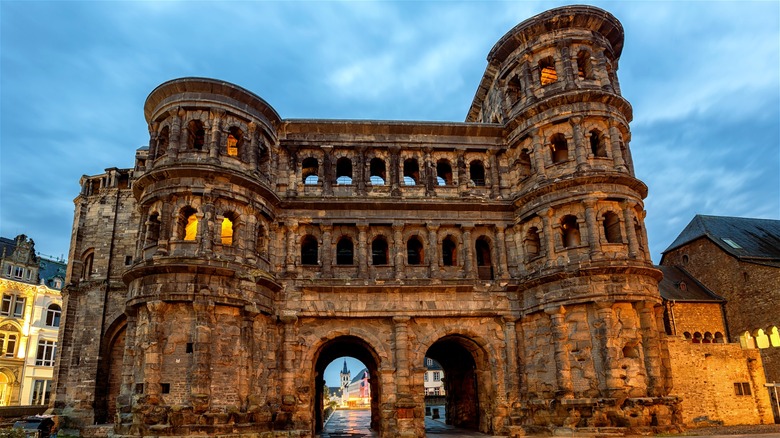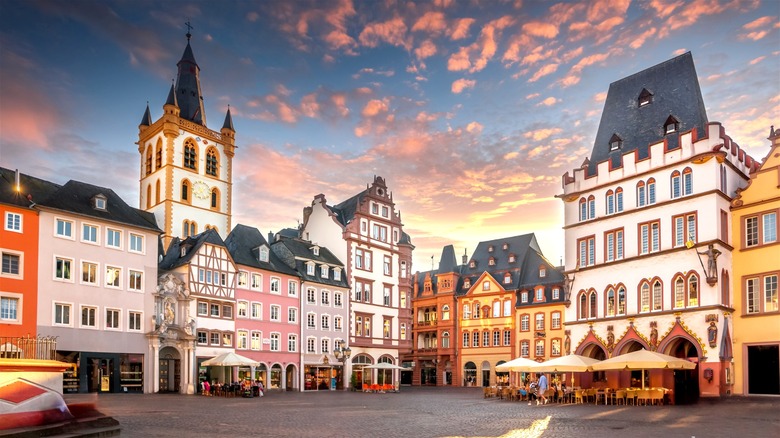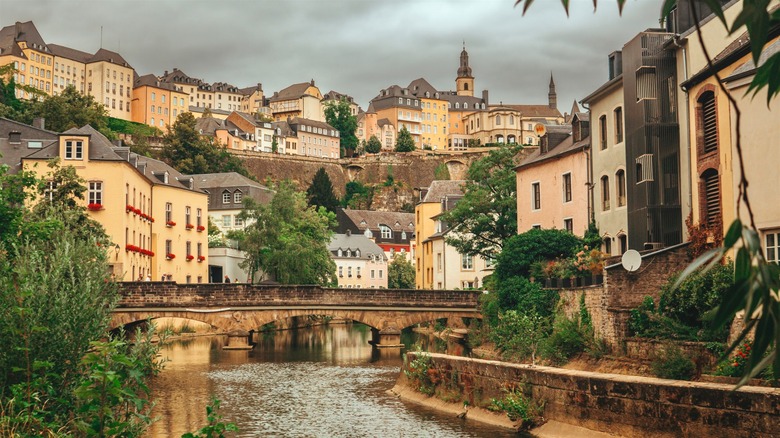Germany's Oldest City Is An Overlooked Historic Beauty Boasting Several UNESCO Sites
The Romans arrived at the Moselle River in 17 BC and established Augusta Treverororum, a dense city with houses, palaces, baths, temples, an amphitheater, and a lucrative pottery industry that adorned the city with intricate mosaic detail. Roman influence collapsed in the fifth century, and the city became part of the Frankish kingdom of Clovis. The early Medieval period also standardized its new name, Trier.
Today, Trier is not the global center it once was. Instead, it is a historic university city and one of several underrated German cities brimming with culture that is off the typical tourist trail. Trier melds generations of history, including the best-preserved Roman architecture north of the Alps. The centerpiece is Porta Nigra city gate, built in AD 170 and renamed after its dark appearance some 900 years ago. This awesome gate has been a UNESCO World Heritage Site since 1986. Complementing its architectural splendor, the Moselle River meanders through the city, bordered by steep vineyards, medieval riverfronts, and hilltop castles.
Roman and medieval splendor
Trier is a historic city among historic cities. There are more Roman sites here than anywhere in Germany, including the amphitheater, which hosted gladiatorial combat; the Barbara Baths, the second largest in the whole Roman empire; and the immaculately preserved Konstantin-Basilika, which is the largest surviving ancient room without supporting columns. Second only to the Porta Nigra city gate in terms of historical significance is the Cathedral of St. Peter. Roman Emperor Constantine the Great ordered the construction in 313 AD, making it the oldest cathedral in Germany.
The Romans brought not only architects but winemakers, too. Mediterranean grapes are still used in Trier today and are cultivated with local varieties in around 9000 hectares of vineyards by the Moselle River. Riesling white wine is the specialty of this region — which ranks among the world's under-the-radar wine spots — and it is enjoyed for its diverse and intense terroir flavors.
Trier is also rich in post-Roman architecture, especially the Medieval main market square — or hauptmarkt — with its medley of Baroque and Renaissance styles. A short walk south of here is Brückengasse 10, the birthplace of Trier's most famous 19th-century son, Karl Marx. A museum occupies the early 18th century building, exploring the philosopher's ideas and their profound effect on 20th-century history.
Beautiful valley views and a trip to Luxembourg
Trier is blessed by geography as well as architectural splendor. Nestled in a beautiful valley, the Moselle River winds around steep hills and vineyards that can be observed on foot or at water level. For instance, half-day cruises take passengers south to Saarburg, a postcard town with a church, a hilltop castle, and a beautiful assortment of pastel and timbered buildings.
For those seeking exercise, there is the epic Moselsteig Trail, with sweeping views of the city and valley. The trail runs over 365 km from Perl to Koblenz and has 35 partner trails, taking hikers to countless ruins, churches, vineyards, and vantage points.
For more extended stays, consider a trip to nearby Luxembourg, one of the smallest and wealthiest nations in Europe. Public transport is free in this tiny kingdom, and it will take you to further UNESCO World Heritage sites, namely the steep medieval fortifications of the Old City of Luxembourg.


